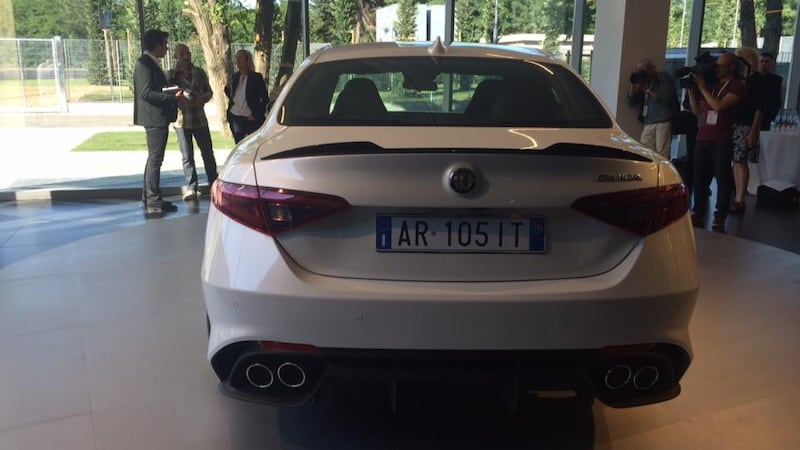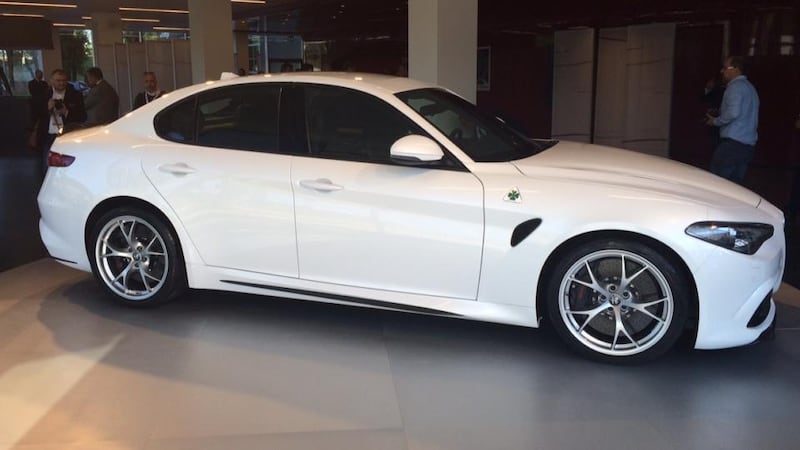Alfa Romeo unveiled its new premium family saloon on Wednesday evening, a car that will spearhead a make-or-break turnaround strategy for the Italian brand. The Giulia is pitched to take on the likes of the Audi A4 and BMW 3-Series, and is the first of eight new models due to be launched over the next three years in a €5 billion investment in the brand.
Owned by Fiat-Chrysler Group (FCA), Alfa has been in a tailspin in recent years, dogged by perceptions of poor reliability and quality, while losing out to the powerful German rivals like Audi, BMW and Mercedes-Benz. Sales peaked in 2001 at 217,000 but recently registrations fell to 68,000.
The Giulia is meant to change all that. FCA hopes to achieve annual sales of 400,000 by 2018, a figure few analysts believe is realistic.


In terms of styling, the car is admirably good looking, bearing some resemblance to the rivals in this class and in a way to the Maserati Ghibli from its sister brand. Under the bonnet, there will be a choice of engines, including a top of the range 510bhp V6 petrol engine designed by sister brand Ferrari.
In an unveiling event high on promise about the future of the brand but lacking in much detail about the car itself, Alfa Romeo chief executive Harald Wester - in a clear swipe at German rivals - promised a car that cast off the "cold" and "technocratic" trends in the premium market at present, a sector he said was dominantly "zero emotion". Alfa he says, wants to be a "creator" of cars, not a boring formulaic "maker" of "replacable, functional mobility".
However there was little detail on what the new Giulia will actually be like when it arrives in Irish showrooms, probably in Spring next year. A 510bhp V6 is all fine and impressive as a poster car but it’s not going to cut muster for Irish buyers deciding between an Audi A4 2.0 TDi or a BMW 320d SE.
When the Giulia does land in Ireland it will feature new engines developed for Alfa. Two new engines are planned as part of the €5 billion turnaround investment. All Giulias will be either rear-wheel drive or four-wheel-drive.
With nothing confirmed as yet, it’s left for us to speculate that the Giulia may well feature variations of the 2.2-litre and 3-litre diesel engines recently introduced in the Jeep range. If they do feature in the Alfa they are likely to be reworked and come with a variety of power outputs.
The new car may deliver on styling and we can expect it to be adept in terms of driving fun but customers are likely to demand more before they purchase. A vastly improved dealer network and reassurances on reliability are needed to rebuild the brand.
Alfa executives hope to lure buyers with the brand’s heritage and a perceived consumer desire for an alternative to the German brands. The heritage link was strongly in evidence at the Giulia launch, which took place in the re-opened museum to Alfa Romeo in Milan. However nostalgia for the brand only really resonates with the baby boomer generation, now in their 60s. Alfa means little to motorists under a 45 years of age.
As for alternatives to the German brands, rivals such as Jaguar, Volvo and Lexus are further advanced than Alfa in implementing this strategy. Meanwhile more mainstream brands like Mazda are encroaching into the lower-end of the premium segment, seeking out its higher-margins.
Some analysts suggest the real target for the Giulia is not simply customers, but potential buyers for the Alfa brand. Earlier this year FCA chief executive Sergio Marchionne sought a merger with General Motors, a move rebuffed by the US car giant.
Whatever about the underlying agenda, the new Giulia also carries a revamped Alfa logo for the brand, which will no doubt contribute to a small slice of that €5 billion spend as the advertising and marketing material, along with dealer signage, will all get updated.












